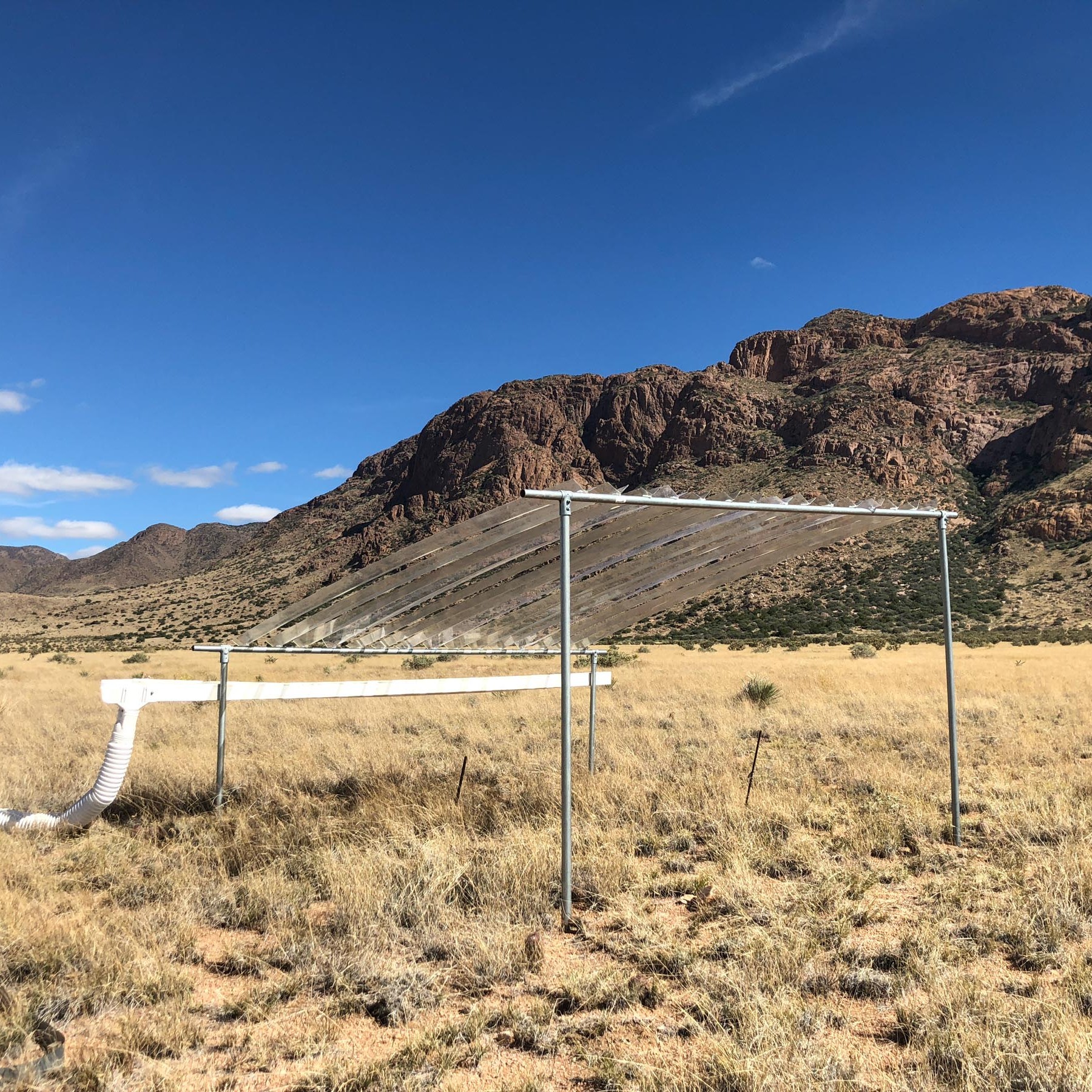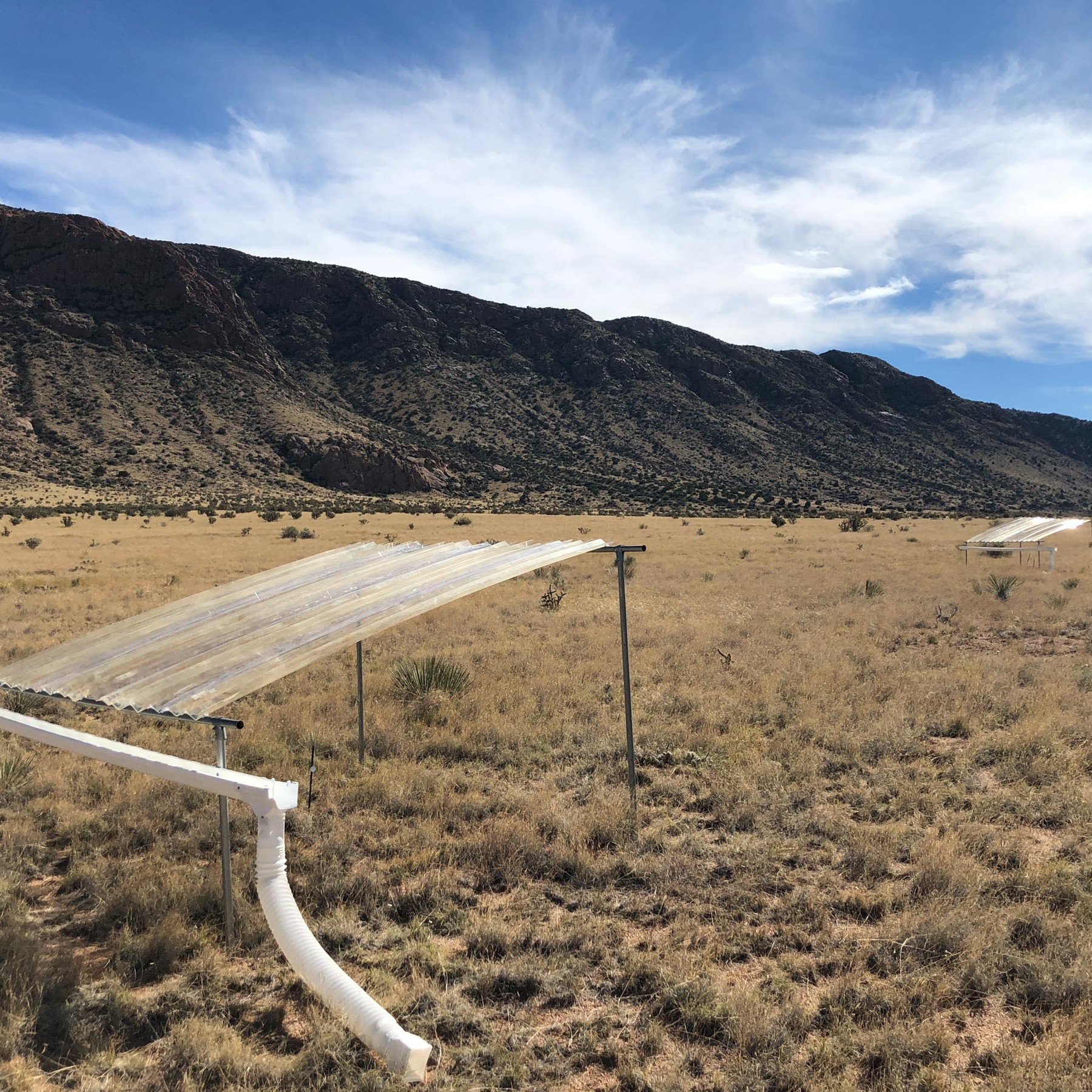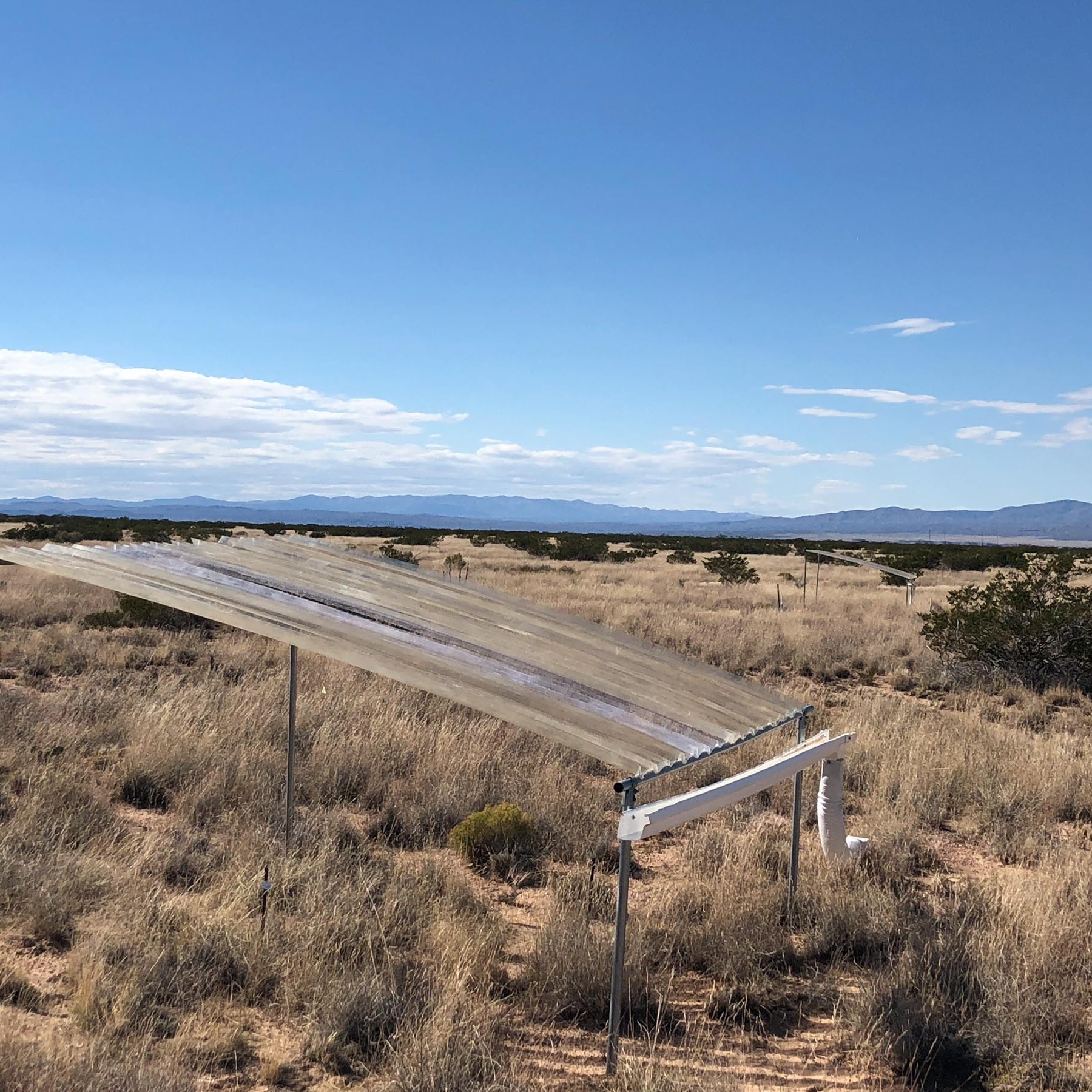Objective:
The Drought Network is a series of globally distributed drought experiments with a standardized protocol which provides the capacity to understand drought sensitivity patterns across biomes and climate gradients. Three Sevilleta sites were established in 2018 in Chihuahuan Desert grassland (black grama-dominated), Plains grassland (blue grama-dominated), and an ecotonal site. Together, these sites contribute data to the global network, but also provide the opportunity to study short-term drought effects across Sevilleta grasslands. The three Sevilleta sites allow us to compare drought responses between dominant grass species, black grama and blue grama, both separately and while in direct competition.
Novelty:
The Sevilleta sites were installed in coordination with four other sites in the Sonoran and Mojave deserts, which when combined, make up one of the driest sets of coordinated drought experiments in the world. By studying plant, biocrust, microbial and fungal responses to drought across three North American deserts, we can begin to understand the mechanisms by which state change occurs in response to drought and predict future changes in communities due to climate variability and associated extreme climate events.
Design:
Each site includes fourteen plots (2.5 m x 2.5 m): seven control plots and seven treatment plots with structures that reduce ambient rainfall year-round by 66%. A 1 m x 1 m permanent quadrat located in the center of each plot is used for plant monitoring, and other processes are measured around the perimeter of the quadrat. We use existing control plots at EDGE and WENNDEx experiments for control plots because the DroughtNet infrastructure is co-located with these experiments. The drought treatment will be applied for four years (until 2022), at which time the drought shelter infrastructure will be removed and post-drought recovery monitoring will begin.
Responses:
Each spring and fall, we measure plant cover and estimate biomass by species using standard SEV LTER protocols. Seasonal biocrust monitoring began in 2019, and collections for biocrust and fungal communities, microbial biomass, and plant stable isotopes occurred in 2020 after two years of drought treatment.
Supporting Documents:
Drought Impact on Desert Ecosystems, Drought Network precipitation manipulation experiment in desert grasslands. https://portal.edirepository.org/nis/mapbrowse?scope=knb-lter-sev&identifier=336




